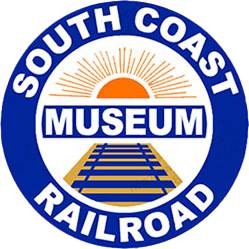The South Coast Railroad Museum is a business name and the principal program of the non-profit Institute for American Research.
Incorporated: October 1968, State of California
Corporation number: 556115
Federal employer identification number: 95-2579618
Tax-exempt classifications:
- Federal: 501(c)3, non-profit scientific and educational organization
- State: Public benefit, scientific and educational corporation
During its history, the Institute has completed hundreds of research, educational, publication, and historic preservation projects in the Western United States. These efforts have been supported by grants, contracts, and awards from a distinguished list of national, state, local, and private foundations and funding agencies, including:
National & Federal
- National Science Foundation
- National Endowment for the Humanities
- Institute of Museum and Library Services
- American Association of Museums
- National Institute for the Conservation of Cultural Property
- National Park Service
- U.S. Dept. of Interior, Bureau of Land Management and Bureau of Reclamation
- U.S. Air Force
- U.S. Dept. of Energy and Dept. of Health, Education and Welfare
- U.S. Geological Survey
- U.S. Army Corps of Engineers
State & Local Government
- California Council for the Humanities
- Arizona Dept. of Transportation and Dept. of Parks
- California Dept. of Water Resources and Dept. of Parks
- Nevada State Parks
- Arizona Office of Historic Preservation
- County of Santa Barbara
Private Foundations and Organizations
- Santa Barbara Foundation
- Alice Tweed Tuohy Foundation
- La Vista Foundation for the Blind and Physically Handicapped
- Wood-Claeyssens Foundation
- Amgen Foundation
- Winterthur Museum
- Foundation for Field Research
- ANL Foundation
- Irvine Foundation
“South Coast Railroad Museum at Goleta Depot” is a business name of the Institute. The organization formally established the railroad museum in 1983, the same year it was asked to assume responsibility for and obtained legal title to Goleta Depot. The depot, built in 1901 by the Southern Pacific Railroad, was closed in 1973 and moved to Lake Los Carneros County Park in 1981. It was dedicated as Santa Barbara County Historical Landmark No. 22 in October 1982.
Professional Affiliations
The Institute has participated in or been affiliated with various organizations, including:
- American Association of Museums
- American Association for State and Local History
- Association of Railway Museums
- California Association of Museums
- Railway and Locomotive Historical Society
Our Mission and History
Today, all Institute programs are based in Santa Barbara County, California, focusing on local subjects and serving both residents and visitors to the area. This follows a rich tradition of activities, spanning more than two decades and covering a much broader geographical area.
The Institute’s first major project involved the archaeological reconnaissance of Amchitka Island in the Aleutian Chain off the Alaskan coast, and the excavation of six archaeological sites prior to nuclear testing on the island. This 1969-1970 research represents an important contribution to the study of the peopling of North America.
During the early 1970s, the Institute conducted various research and historic preservation projects in Southern California. The Institute moved its offices from Orange County to Santa Barbara County in 1977. To reflect the organization’s broadening focus, the name was changed in 1979 from Archaeological Research, Inc.
In the late 1970s and early ’80s, the Institute was a primary contractor during the federal government’s California Desert Conservation Project. This involved the discovery, investigation, and protection of thousands of prehistoric and historic sites distributed over an area representing about 20% of the State of California.
The Institute opened a branch office in Tucson, Arizona in 1981, from which it conducted the largest archaeological research program in the history of Southern Arizona, a project that concluded in 1989.
The Institute began both its “Publications in Local History” series and its “Anthropological Papers” series in 1983.
